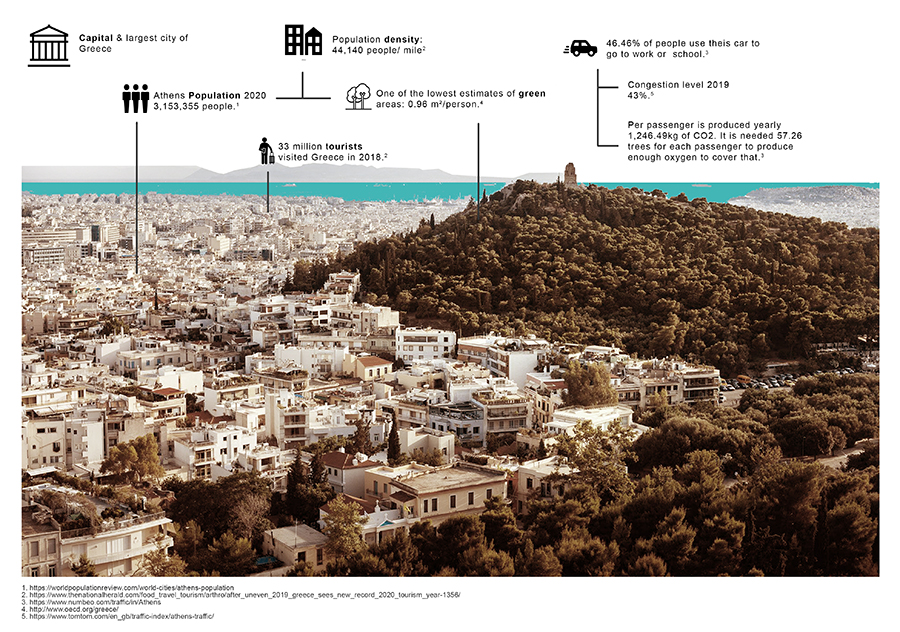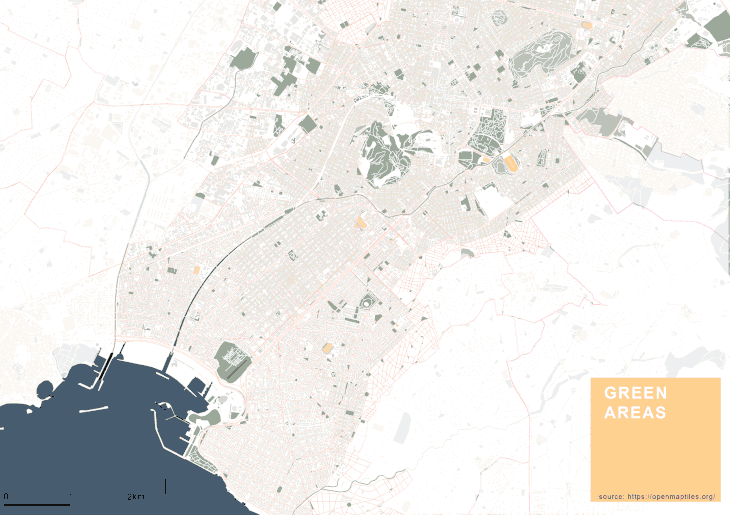terrATHa
Reactivate the abbandoned buildings and terraces of Athens
ABSTRACT
terrATHa aims to reactivate the abandoned buildings and terraces of Athens, to create a new urban network. The goal is to connect the historical center with the new cultural center that is located near the waterfront. They are connected through a network of buildings, terraces, open green spaces, bicycle lanes and stations.
keywords: #DataMapping, #DataVizualisation, #UrbanPlanning, #Athens
INTRODUCTION
Athens is the capital and the largest city of modern Greece and also the leading city of ancient Greece civilization. The city’s rich cultural heritage attracts 33 million tourists every year.
However, Athens has a huge traffic congestion and it is one of the less green cities in Europe.

Our analysis focuses on spotting the major attractions of the city, and our goal is to create new networks of connections between them. We spotted two major concentration points; the area near the historical center of the city, where the majority of monuments and tourist attractions are situated and the new cultural center, on the south near the sea.


We mapped the abandoned places in three neighbourhoods, Metaxourgeio, Koukaki and Exarchia and investigated how new relationships could be settled in. Despite the high population density of these districts we found a large number of abandoned buildings that could be activated. The first goal is to transform these buildings and especially their rooftops into an open, green and public gathering space while improving the social life and life quality of the districts’ inhabitants.







You can access the booklet of the project here: terrATHa
However, Athens has a huge traffic congestion and it is one of the less green cities in Europe.

ANALYSIS
The urban tissue of the city is densely built and habited and the green spaces are rather fragmented and not adequate in relation to the population. Furthermore, mobility problems are prevalent, as the car is currently the main means of transport.Our analysis focuses on spotting the major attractions of the city, and our goal is to create new networks of connections between them. We spotted two major concentration points; the area near the historical center of the city, where the majority of monuments and tourist attractions are situated and the new cultural center, on the south near the sea.

TerrATHa Project
TerrATHa aims to reactivate unused abandoned buildings or buildings with no current use, to enhance the terraces of the city and to promote bicycle use.The concept is to re-appropriate the terraces of abandoned buildings into a n open public space and to create a bike lanes network between these new attraction points and the new active district of Athens near the sea.
We mapped the abandoned places in three neighbourhoods, Metaxourgeio, Koukaki and Exarchia and investigated how new relationships could be settled in. Despite the high population density of these districts we found a large number of abandoned buildings that could be activated. The first goal is to transform these buildings and especially their rooftops into an open, green and public gathering space while improving the social life and life quality of the districts’ inhabitants.







You can access the booklet of the project here: terrATHa
terrATHa is a project of IAAC, Institute for Advanced Architecture of Catalonia developed in the Master in City & Technology in 2020/21 by Students: Stefania-Maria Kousoula, Diana Roussi, Tugdual Sarazin and Faculty: Manuel Gausa, Nicola Canessa & Giorgia Tucci